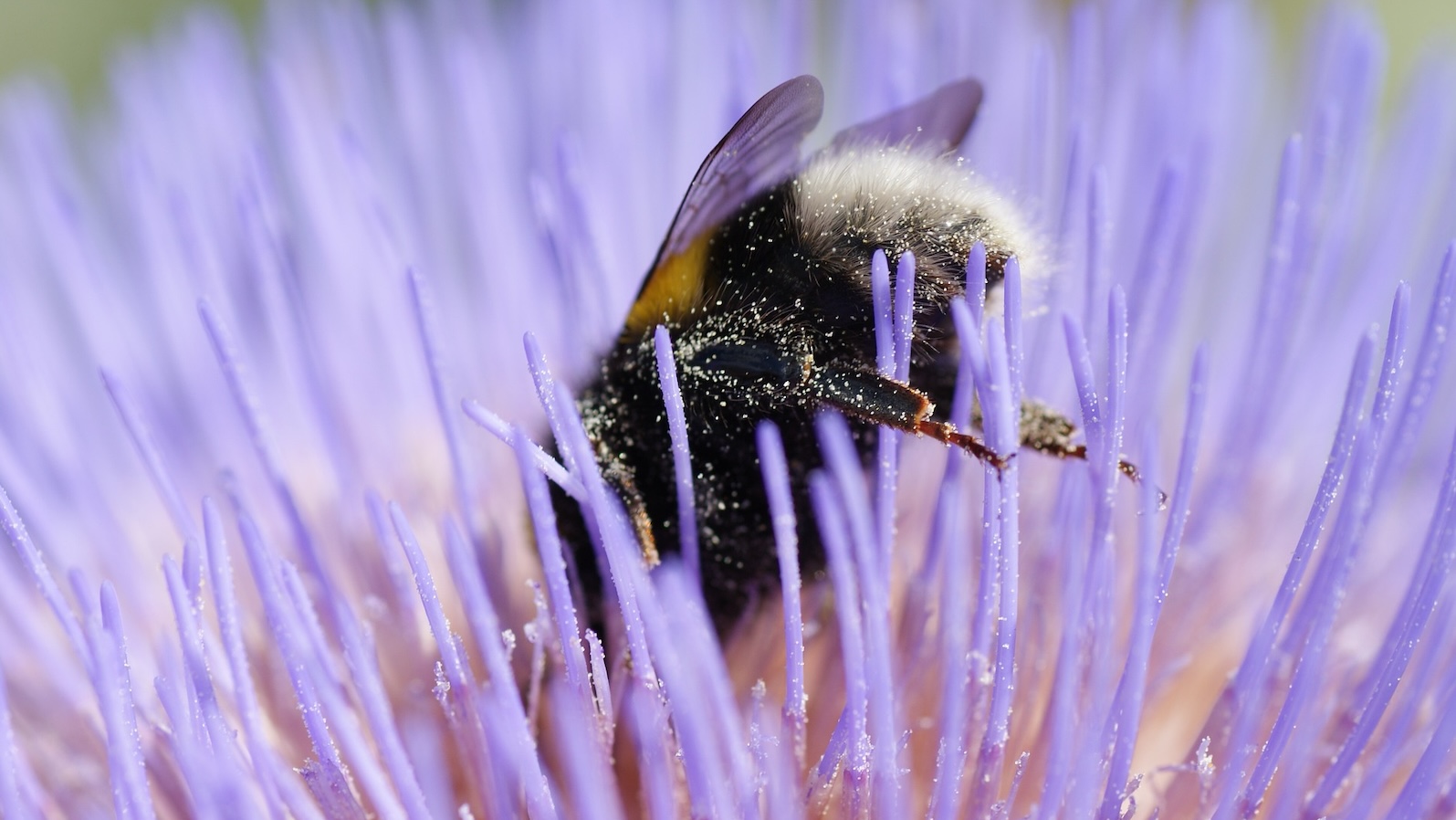
Donate to help save the bees this Earth Day
Neonicotinoid pesticides are called “bee-killing pesticides” for a reason. But what exactly do they do to bees?
Donate
Toxic neonicotinoid pesticides are particularly terrible for bees. But what exactly is happening to the bees as pesticides spread?
Here are just three of the ways that neonicotinoids (neonics) are devastating bees:
Neonicotinoid pesticides attack bees at their most vulnerable. As babies, bees are still developing. Other bees might bring back contaminated nectar and pollen, and small doses of neonics start to affect baby bees’ brains as they grow.
In one study, researchers used CT scans to show that specific parts of bumblebee brains grew abnormally when exposed to pesticides as babies.
Baby bees face brain damage that will make their whole life more difficult — it makes it harder for them to learn and perform simple tasks. Just a small amount of these pesticides spells doom for baby bees.
In small quantities, neonics don’t kill bees on the spot, but they do make them very sick. There’s a long and horrible list of side effects for bees.
Another study showed that bumblebees can get addicted to pollen laced with pesticides once they get a taste. And if they keep going back to contaminated flowers, they’ll face even more consequences.
As neonics damage a bee’s brain cells, she starts to lose her ability to orient her flight and walk in a straight line. She becomes dizzy and disoriented. Unable to navigate properly, bees can get lost and can’t find the way home.
Brain damage doesn’t just affect a bee’s mind — it affects its entire nervous system. Neonics attack the bee’s central nervous system, overstimulating nerve cells and paralyzing the bee.
Neonics also weaken a bee’s immune system, making them more susceptible to disease. Once infected, the bee can spread the disease to the rest of the hive, and the colony could collapse.
The most obvious impact is neonics outright killing a bee. Insecticides (one type of pesticide) are used precisely to kill insects, and unfortunately for bees, they’re not safe from being targeted.
Once poisoned by neonics, dead bees are found lying still on their backs, never to fly again.
Bees are dying at alarming rates, and neonics are leading many bee species to the brink of extinction. A study published in the journal One Earth found that a quarter of known bee species haven’t been seen in the wild since the 1990s.
To save the bees from this horrible fate, we need to ban the worst uses of neonic pesticides.
With your help, we’re making progress for the bees. Ten states have taken good initial steps to restrict the use of neonics. Lowe’s has committed to stop selling neonics in its stores. And we helped convince the USDA to restore a critical pesticide tracking program.
We’re keeping up the momentum for the bees and doing all we can to protect our best pollinators. You can help save the bees by making an Earth Day gift to Environment Washington today.
To save the bees from a horrible fate, we need to ban the worst uses of bee-killing pesticides. Make a gift this Earth Day to help save the bees.
Donate
Steve directs Environment America’s efforts to protect our public lands and waters and the species that depend on them. He led our successful campaign to win full and permanent funding for our nation’s best conservation and recreation program, the Land and Water Conservation Fund. He previously oversaw U.S. PIRG’s public health campaigns. Steve lives in Sacramento, California, with his family, where he enjoys biking and exploring Northern California.
